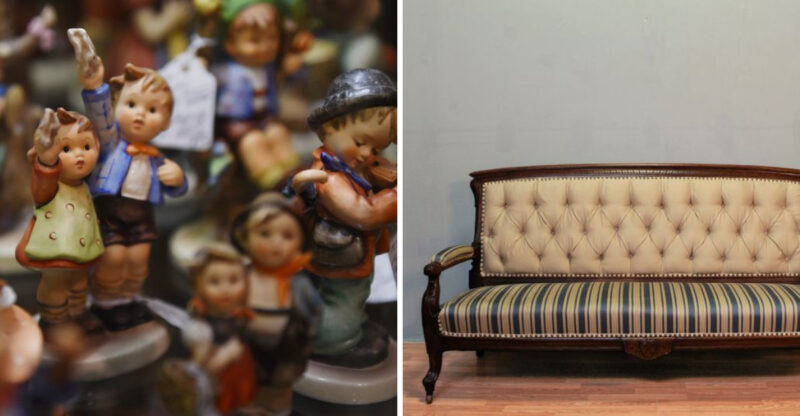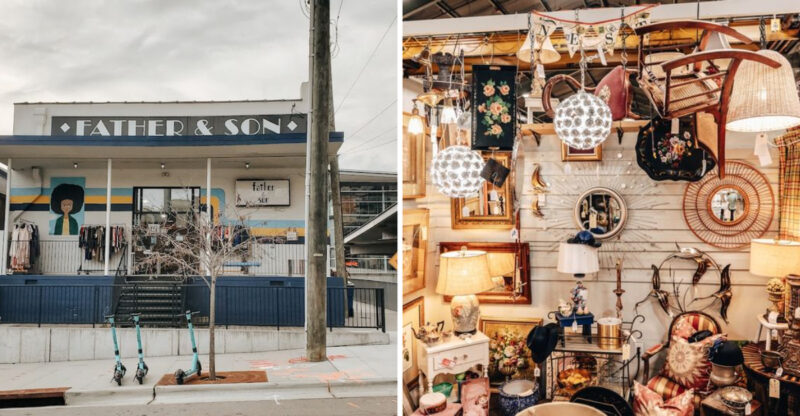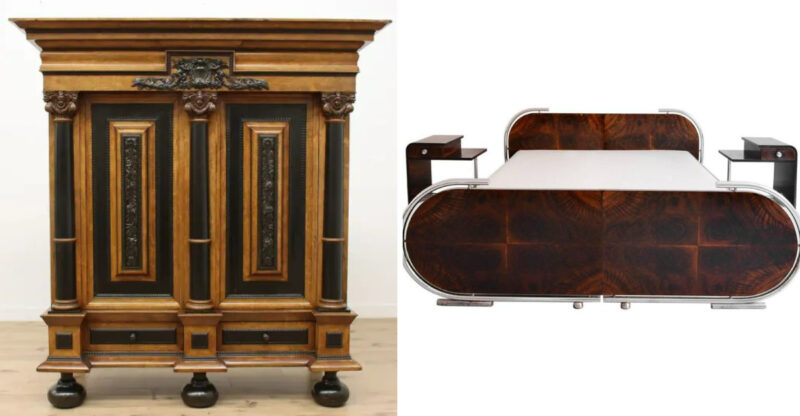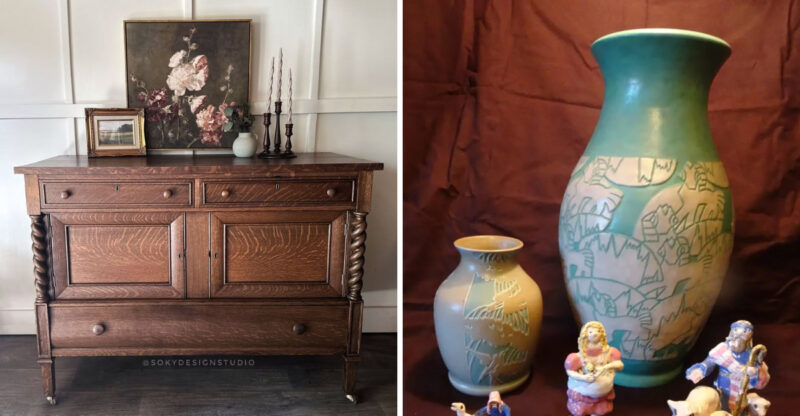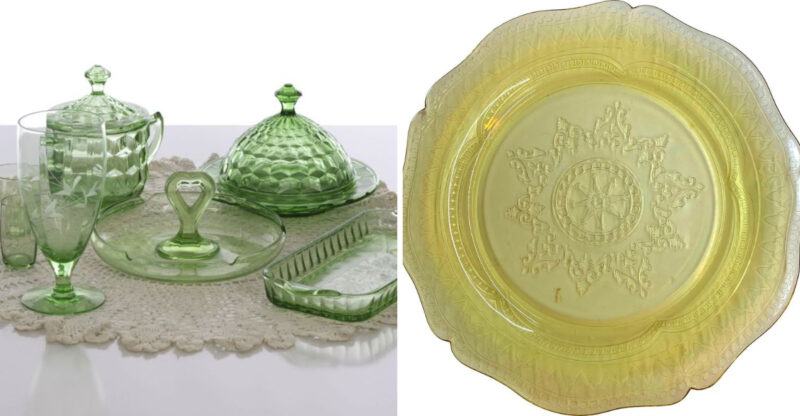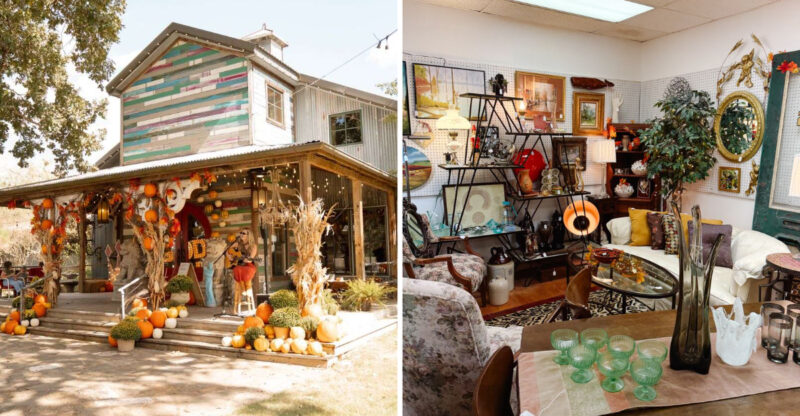5 Valuable Depression Glass Styles And 5 That Rarely Fetch Much
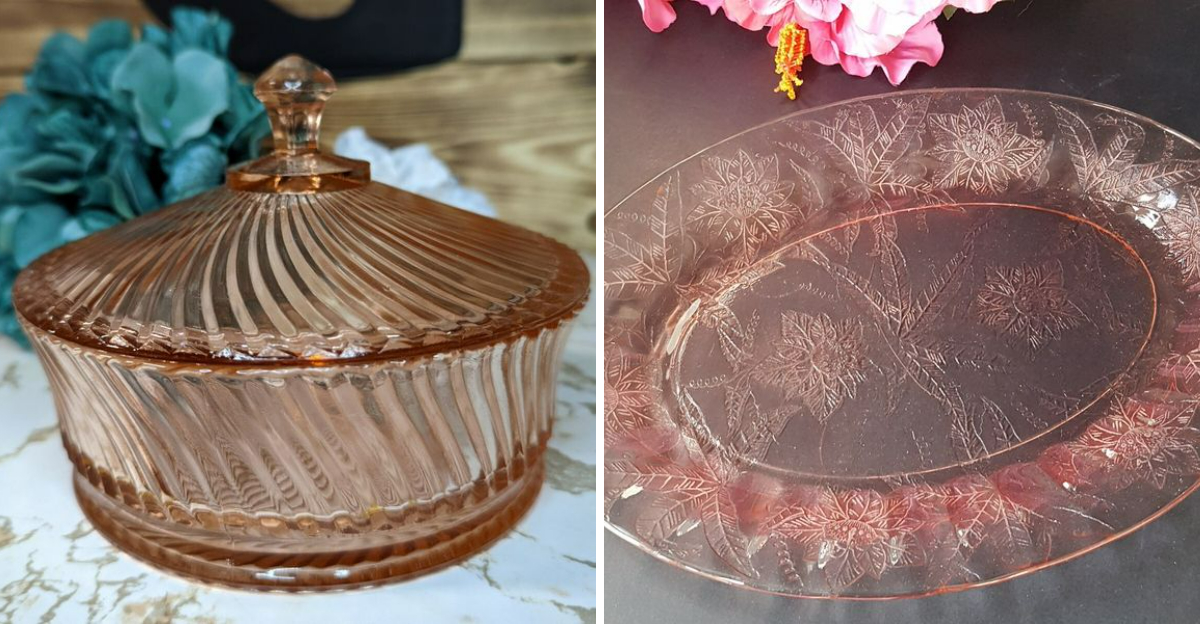
During the Great Depression, glass manufacturers created colorful, affordable dishware that brought joy to struggling families. These mass-produced pieces have since become treasured collectibles, with some patterns commanding impressive prices while others remain budget-friendly finds.
I’ve spent years hunting through antique shops and estate sales, learning which Depression glass styles are worth investing in and which you might want to admire but leave behind.
1. American Sweetheart Pink – A Collector’s Dream
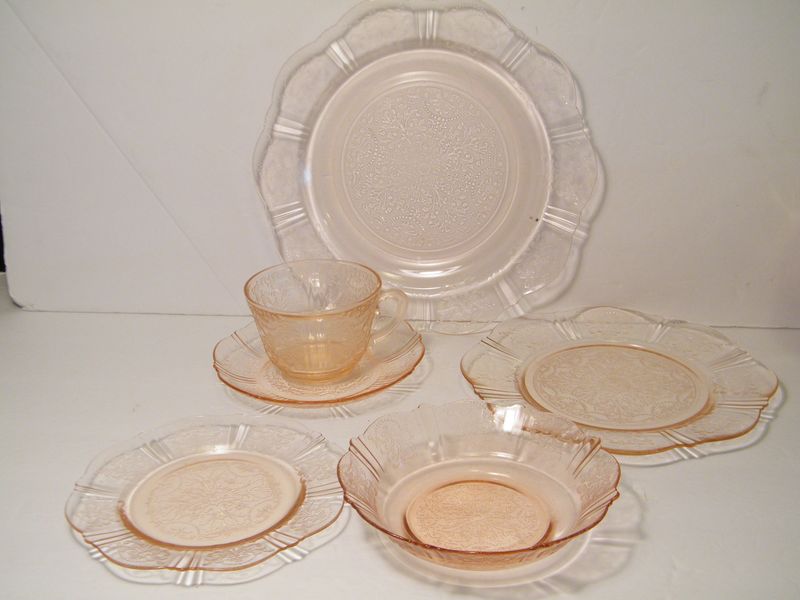
You’ll spot American Sweetheart Pink by its delicate scalloped edges and intricate floral pattern. Made by MacBeth-Evans from 1930-1936, this rosy-hued treasure tops many collectors’ wish lists.
I recently watched an American Sweetheart cake plate sell for over $300 at auction! The short production period and distinctive color make this pattern especially valuable when complete pieces surface in good condition.
Complete sets rarely appear together, making each discovered piece feel like striking gold in the collecting world.
2. Royal Lace Cobalt Blue – Rare and Remarkable

Royal Lace in cobalt blue ranks among the most sought-after Depression glass patterns ever produced. Hazel Atlas made this stunning pattern between 1934-1941, but the cobalt blue version was extremely limited.
Finding authentic pieces feels like discovering buried treasure! The deep blue coloration contrasts beautifully with the intricate lace pattern, creating an eye-catching display piece.
Collectors eagerly compete for these rare items – a single cobalt blue Royal Lace dinner plate might command $200+ at specialized auctions.
3. Cherry Blossom Pink – Blossoming Value

Cherry Blossom pattern captures the delicate beauty of spring with its distinctive floral design. Jeannette Glass Company produced this lovely pattern from 1930-1939, with the pink version becoming particularly prized by collectors.
The pattern features graceful cherry branches with tiny blossoms and small birds – absolutely charming! I’ve watched the value steadily climb over decades of collecting.
Complete serving pieces like covered butter dishes or cookie jars can fetch upwards of $150, while more common items like dinner plates might sell for $40-60 each.
4. Madrid Blue – Stunning Sapphire Treasure
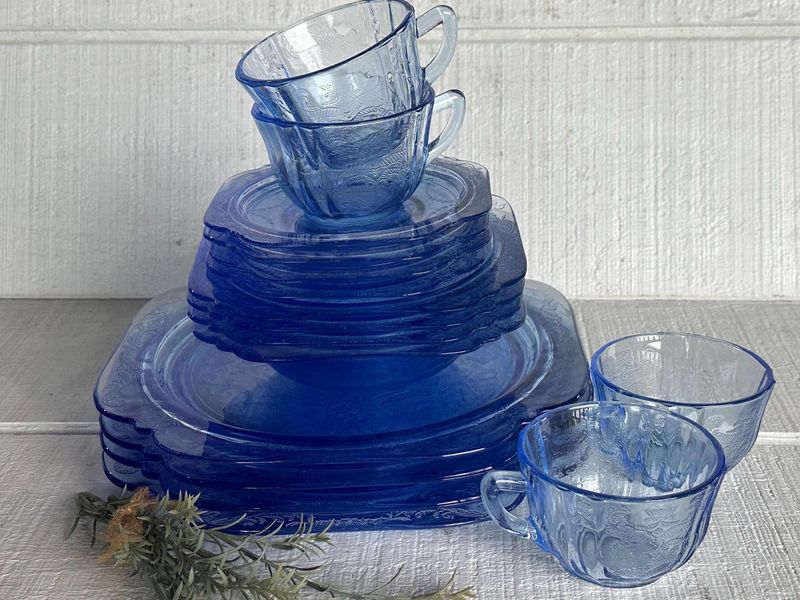
Madrid pattern in blue stands out for its geometric Art Deco styling and rich cobalt coloration. Federal Glass produced this stunning pattern from 1932-1939, creating an instant classic that collectors now eagerly pursue.
The deep blue color makes these pieces pop when displayed! I’ve noticed Madrid blue pieces becoming increasingly difficult to find in perfect condition.
Cup and saucer sets regularly sell for $40-60, while serving pieces like covered candy dishes might command $100+ when free of chips or cracks.
5. Cameo Green – The Elegant Emerald
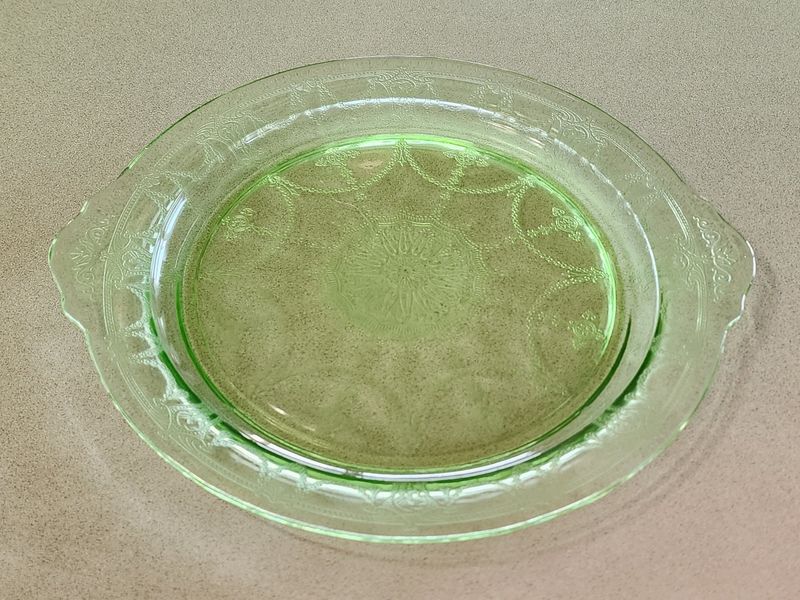
Cameo pattern in green showcases delicate etched designs that truly capture Depression-era elegance. Hocking Glass Company created this beautiful pattern between 1930-1934, making it both scarce and desirable.
The soft green coloration paired with the raised cameo design creates a sophisticated look unlike other Depression glass patterns. My grandmother’s Cameo collection started my lifelong passion for these vintage treasures!
Dinner plates typically sell for $40-60 each, while harder-to-find pieces like covered vegetable dishes might bring $150-200 in excellent condition.
6. Federal Diana – Common But Charming
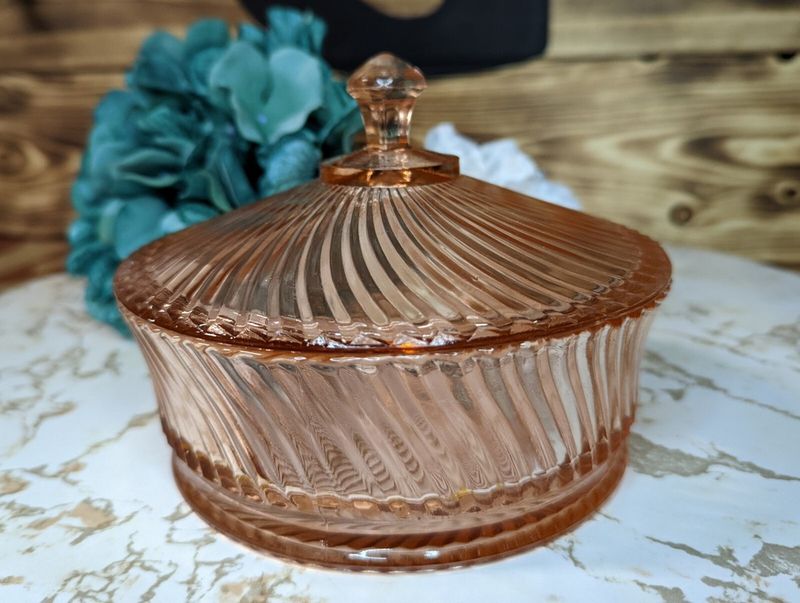
Federal Diana pattern appears frequently in antique shops, typically commanding modest prices despite its undeniable charm. Federal Glass Company mass-produced this pattern between 1937-1941, flooding the market with affordable tableware.
The simple design features vertical ribbing with small medallions – pretty but not particularly distinctive. I often see these pieces priced under $10 at flea markets.
While not a significant investment, Diana pieces make perfect starter items for new collectors or practical everyday use without worrying about damaging valuable collectibles.
7. Hazel Atlas Newport – Budget-Friendly Beauty
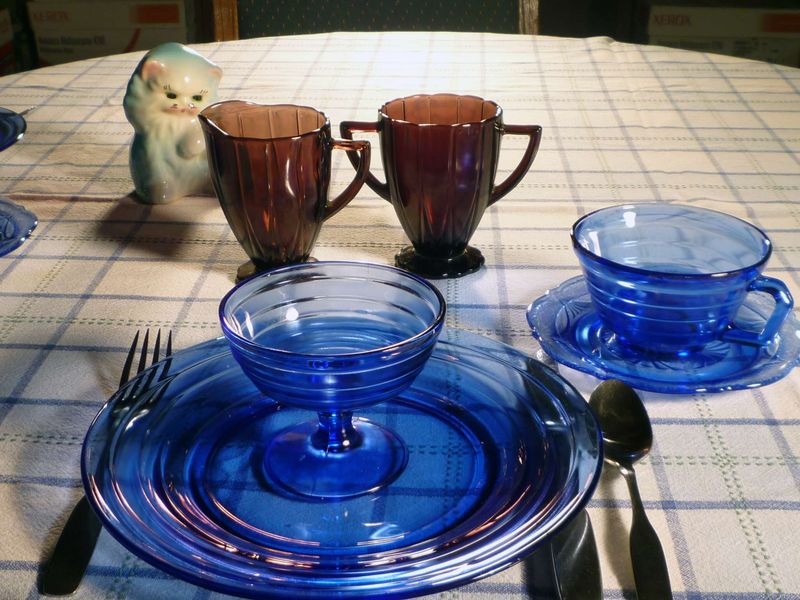
Newport pattern by Hazel Atlas remains abundant and affordable despite its attractive “hairpin” design. Produced from 1936-1940, these pieces were mass-produced in huge quantities, keeping values relatively modest even today.
The pattern features vertical lines resembling hairpins – simple but elegant. My collection started with Newport because the affordable prices allowed me to acquire complete place settings without breaking the bank.
Dinner plates typically sell for just $8-15 each, while even serving pieces rarely exceed $25-30 unless extraordinarily rare or in unusual colors.
8. Jeanette Floral – Overlooked and Undervalued
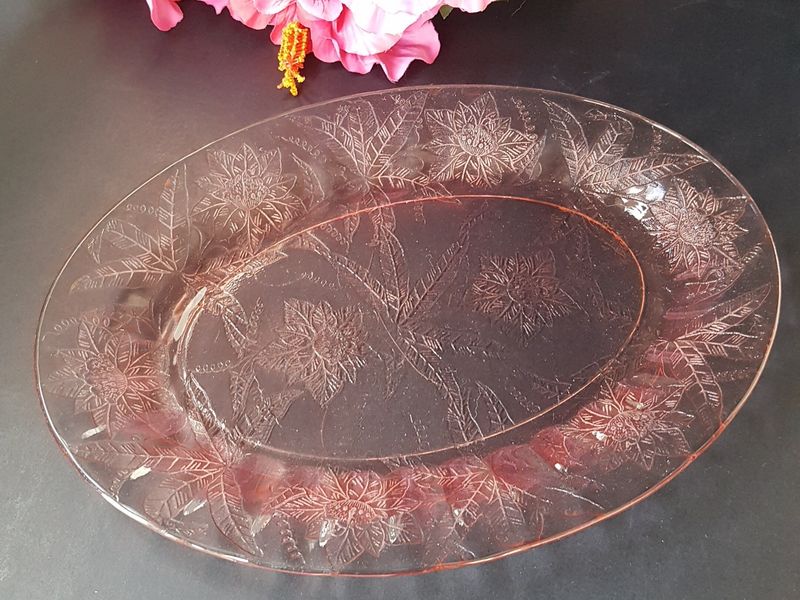
Jeanette Floral pattern offers lovely poinsettia designs that somehow never captured collectors’ hearts like other patterns. Produced by Jeanette Glass Company from 1931-1935, these pieces remain surprisingly affordable despite their attractive appearance.
The delicate floral pattern adds vintage charm to any table setting. I’ve often found these pieces mixed in with more expensive patterns at estate sales, priced far below what their beauty might suggest.
Most Floral pieces sell for under $20, making them perfect for collectors who appreciate Depression glass aesthetics without the high-end price tags.
9. Anchor Hocking Oyster and Pearl – Common as Sand
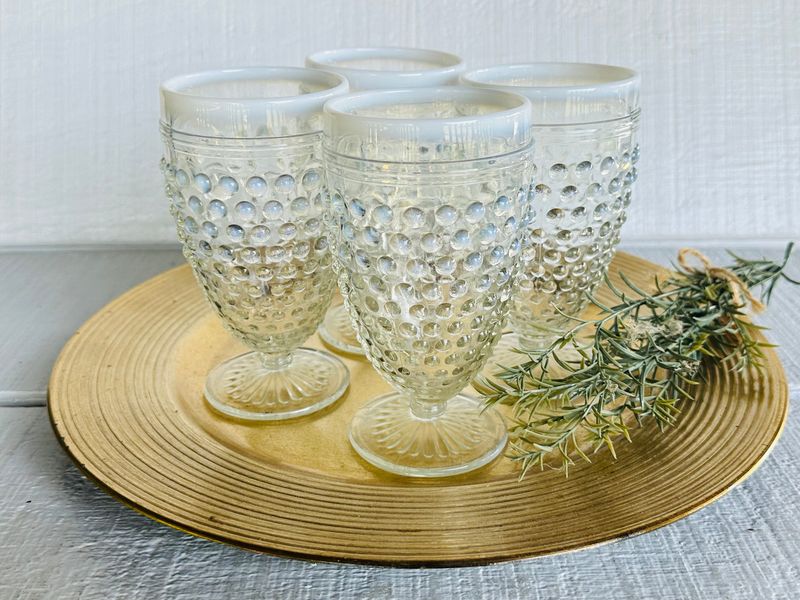
Oyster and Pearl pattern flooded American homes during the Depression era and remains extremely common today. Anchor Hocking produced these pieces in massive quantities from 1938-1944, ensuring they’d still be plentiful nearly a century later.
The pattern features small pearl-like bumps covering the surface – interesting but not particularly refined. You’ll spot these pieces in nearly every antique mall in America, usually priced quite reasonably.
Even complete place settings might sell for under $50 total, making this pattern perfect for practical use rather than serious collecting.
10. Hocking Block – Functional But Forgettable
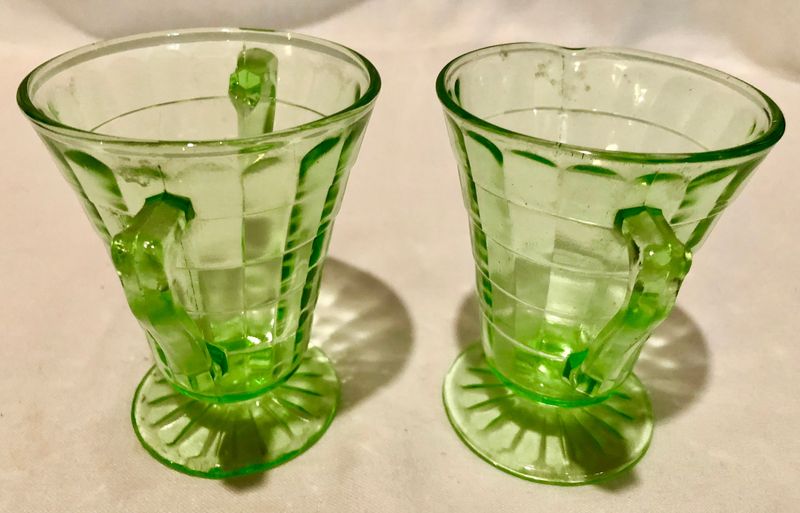
Block pattern by Hocking Glass Company remains one of the most common Depression glass finds, rarely commanding premium prices. Produced from 1929-1933, this geometric pattern emphasized function over fancy details.
The simple square design lacks the intricate details that typically drive collector interest. I’ve found numerous Block pieces hiding in my grandmother’s kitchen cabinets, used daily rather than saved as treasures.
Most pieces sell for $5-15 regardless of condition, making them perfect starter pieces for those curious about Depression glass without significant investment.

